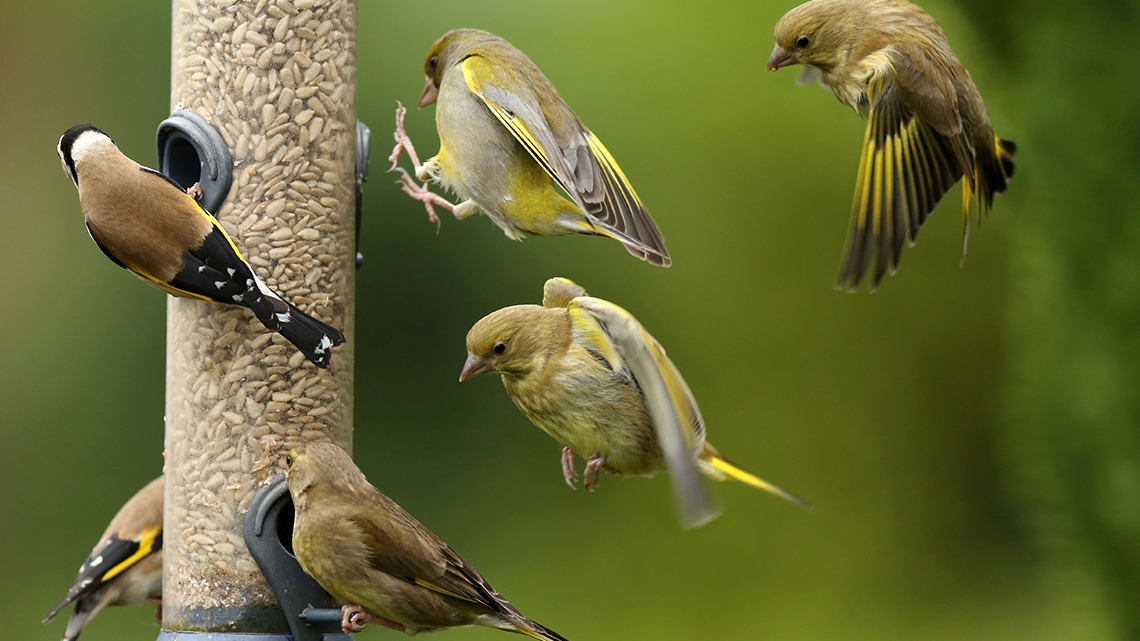Minds On
Methods of organizing discrete data
Discrete data is a form of quantitative data. Discrete data can be counted. For example, someone can be in Grade 6 or Grade 7, but they can’t be in part of a grade.
Consider the following graph. This data counts the number of responses in each category, so it is considered to be discrete data.

Brainstorm
Analyze the bar graph
- Which are the two most common responses in Grade 7?
- What is the total number of responses to the survey?
Throughout this learning activity, you can record your thoughts digitally, orally, or in print.
Action
Representing survey data
Every year, Grade 7 students plan and organize an Annual Play Day for the primary division of their school. The day is always successful. However, the planning has become very complicated as there are too many events. The planners decide they need to figure out which events are most popular and should be kept.

The Grade 7 planners surveyed the classes who participate in the Play Day.
Students in Kindergarten, Grades 1, 2, and 3 were asked to pick the three events they were most excited about. The data was organized into four frequency tables.
Press 'Frequency table' to review the definition.
A frequency table organizes data into categories and shows the number of occurrences for each category.
Your task
Graph the data to help the planners understand the survey results. Create a bar graph for each of the following frequency tables. You can use pencil and paper, concrete materials, or the tool supplied for each table.
| Kindergarten results | ||
|---|---|---|
| Name of event | Tally marks | Frequency |
| Bean bag toss | 9 | |
| Water balloon toss | 10 | |
| Relay | 11 | |
| Soccer | 15 | |
| Sidewalk chalk creations | 6 | |
| Follow your partner | 5 | |
| Parachute games | 16 | |
| Ring toss | 4 | |
| Grade 1 results | ||
|---|---|---|
| Name of event | Tally marks | Frequency |
| Bean bag toss | 8 | |
| Water balloon toss | 20 | |
| Relay | 11 | |
| Soccer | 17 | |
| Sidewalk chalk creations | 4 | |
| Follow your partner | 5 | |
| Parachute games | 10 | |
| Ring toss | 4 | |
| Grade 2 results | ||
|---|---|---|
| Name of event | Tally marks | Frequency |
| Bean bag toss | 6 | |
| Water balloon toss | 25 | |
| Relay | 9 | |
| Soccer | 17 | |
| Sidewalk chalk creations | 8 | |
| Follow your partner | 1 | |
| Parachute games | 6 | |
| Ring toss | 2 | |
| Grade 3 results | ||
|---|---|---|
| Name of event | Tally marks | Frequency |
| Bean bag toss | 4 | |
| Water balloon toss | 23 | |
| Relay | 9 | |
| Soccer | 17 | |
| Sidewalk chalk creations | 10 | |
| Follow your partner | 1 | |
| Parachute games | 2 | |
| Ring toss | 0 | |
Brainstorm
Analyze the graphs
According to the graphs:
- What are the three activities that students were most excited about in each grade?
- What are the three activities that the least number of students selected for each grade?
Create an all-results table
Use the data provided to complete a frequency table that indicates the total results for all grades. Add the data from each frequency table together to find the sum.
Complete Frequency Table: All Results in your notebook or use the following fillable and printable document. If you prefer, use another method to record your data.
|
Name of event |
Frequency |
|---|---|
|
Bean bag toss |
|
|
Water balloon toss |
|
|
Relay |
|
|
Soccer |
|
|
Sidewalk chalk creations |
|
|
Follow your partner |
|
|
Parachute games |
|
|
Ring toss |
Press the ‘Activity’ button to access Frequency Table: All Results.
Consolidation
What’s the answer?
Now it’s your turn to conduct a survey and collect discrete data about a topic that interests you.
First, come up with a list of questions about things that interest you. You will have to collect data to help answer your question. Consider this as you choose your question.
You could consider the following questions:
- How many tickets were sold at the drive-in theatre every day for the past week/month?
- How many pages are in books by my favourite author?
- How many birds visit the bird feeder at a certain time for a certain number of days?
- How many people pass my house between 4 pm and 5 pm during the week?
Next, choose a question, either from your list or from the suggested questions above, and decide what data to collect. Will you conduct research to find the information? Will you survey a specific group of people to collect the data? Will you observe and tally and record your results in a frequency table?
Record the results from your survey using a method of your choice.
Create a graph that would best represent the data you collected.
If you would like, you can use 'TVO Mathify' to plan out your graph, or any other method of your choice.
Press the ‘TVO Mathify’ button to access this resource
TVO Mathify (Opens in new window)Be sure your graph includes the following:
- a title
- labelled x-axis
- labelled y-axis
- a scale that is consistent
- a key or legend if necessary
Examine the results
Examine the graph and answer the following questions using a method of your choice.
- Which graph did you choose to represent the data you collected? Explain why you think it was an appropriate choice to represent the data you collected.
Consider the question you asked to collect your data.
- Did you collect enough data to make conclusions? If not, how could you adjust your question to get the data you want/need?
- Based on the results and the graph you created, what are some conclusions you can make? What are new questions that you have based on the results of your survey?
Test Your Skills!
Choose the events
The Grade 7 students have been asked to select five of the eight activities. Which five do you recommend? Justify your response using evidence from your completed frequency table.
Reflection
As you read the following descriptions, select the one that best describes your current understanding of the learning in this activity. Press the corresponding button once you have made your choice.
I feel…
Now, expand on your ideas by recording your thoughts using a voice recorder, speech-to-text, or writing tool.
When you review your notes on this learning activity later, reflect on whether you would select a different description based on your further review of the material in this learning activity.
Connect with a TVO Mathify tutor
Think of TVO Mathify as your own personalized math coach, here to support your learning at home. Press ‘TVO Mathify’ to connect with an Ontario Certified Teacher math tutor of your choice. You will need a TVO Mathify login to access this resource.
TVO Mathify (Opens in new window)


